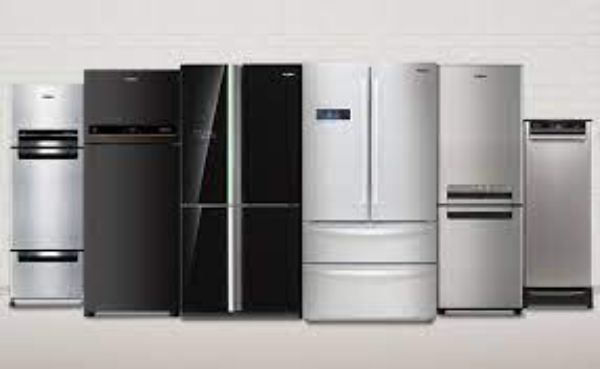When it comes to choosing a refrigerator for your home, there are various styles available, each with its own set of pros and cons. Understanding the different refrigerator styles and their features is crucial in making an informed decision that meets your specific needs.
In this blog post, we will explore the most common refrigerator styles, highlighting their advantages and disadvantages.
Let’s delve into the world of refrigerator styles and uncover the key factors you should consider before making a purchase.
Top-Freezer Refrigerator
Pros
- Affordable: Top-freezer refrigerators tend to be the most budget-friendly option.
- Energy-efficient: They generally consume less energy compared to other styles.
- Wide Storage Space: The freezer compartment is spacious, allowing for ample frozen food storage.
Cons
- Limited Accessibility: Since the freezer is located on top, accessing items in the refrigerator section requires bending down.
- Less Storage Flexibility: The fixed shelves and compartments may limit the storage of larger or taller items.
Bottom-Freezer Refrigerator
Pros
- Convenient Access: The refrigerator section is at eye level, making it easier to reach and organize food.
- Energy-efficient: Like top-freezer models, bottom-freezer refrigerators are typically energy-efficient.
- Freezer Drawer Organization: The freezer drawer design provides better visibility and organization of frozen items.
Cons
- Higher Cost: Bottom-freezer models generally come at a higher price point compared to top-freezer refrigerators.
- Limited Freezer Space: The freezer compartment may have less capacity compared to top-freezer or side-by-side models.
Side-by-Side Refrigerator
Pros
- Wide Storage Space: Side-by-side refrigerators offer generous storage space for both fresh and frozen food.
- Easy Organization: The vertical split design allows for convenient organization and quick access to items.
- Enhanced Accessibility: The refrigerator and freezer sections are placed at a comfortable height for easy access.
Cons
- Narrow Shelves: The vertical design of side-by-side refrigerators may limit the storage of wider or bulkier items.
- Limited Space for Tall Items: The narrow design can make it challenging to store tall items like large bottles or pizza boxes.
- Higher Energy Consumption: Side-by-side models tend to consume more energy compared to top or bottom-freezer styles.
French Door Refrigerator
Pros
- Spacious and Flexible: French door refrigerators offer a wide and flexible storage space.
- Enhanced Freshness: Separate compartments for the refrigerator and freezer help maintain optimal temperature and humidity levels.
- Accessibility and Organization: The double-door design provides easy access to both the refrigerator and freezer sections.
Cons
- Higher Cost: French door models are often more expensive than other refrigerator styles.
- Limited Space for Wide Items: The narrow shelves in the refrigerator section may limit storage for wider items.
- Reduced Freezer Capacity: The freezer compartment is typically smaller compared to other styles.
Compact/Mini Refrigerator
Pros
- Space-saving: Compact refrigerators are ideal for small kitchens, offices, dorms, or as an additional storage unit.
- Portable: Their compact size and often lightweight nature make them easy to move around.
- Energy-efficient: Mini refrigerators generally consume less energy compared to larger models.
Cons
- Limited Storage Capacity: Due to their small size, compact refrigerators offer limited space for food and beverages.
- Lack of Features: They may not have advanced features like ice makers or water dispensers.
- Not Suitable for Large Families: Compact refrigerators may not provide enough storage for larger households.
Refrigerator Styles Pros and Cons
| Refrigerator Style | Pros | Cons |
|---|---|---|
| Top Freezer |
|
|
| Bottom Freezer |
|
|
| Side-by-Side |
|
|
| French Door |
|
|
Factors to Consider
When choosing a refrigerator style, consider your available space, budget, storage needs, and personal preferences. It’s important to weigh the pros and cons of each style to find the one that best fits your lifestyle. Additionally, here are a few more factors to consider when selecting a refrigerator:
- Size and Capacity: Assess the amount of storage space you require for your groceries and consider the dimensions of the refrigerator in relation to your kitchen layout.
- Energy Efficiency: Look for refrigerators with an Energy Star rating to ensure they are energy-efficient, which can help reduce utility costs and minimize environmental impact.
- Features and Technology: Consider the features that are important to you, such as ice makers, water dispensers, adjustable shelves, temperature control, humidity control, and smart connectivity options.
- Maintenance and Durability: Research the brand’s reputation for reliability and customer service. Look for easy-to-clean materials and features that help prolong the life of the appliance.
- Noise Level: Some refrigerators can produce noticeable noise, so consider this factor if you have a preference for quieter appliances, especially in open kitchen layouts or living spaces.
- Design and Aesthetics: Choose a style that complements your kitchen décor and matches your personal taste. Refrigerators come in various finishes, such as stainless steel, black, white, or custom panels.
- Price and Budget: Set a budget range and consider the long-term cost of ownership, including energy consumption and potential maintenance or repair expenses.
Remember, the perfect refrigerator style for one person may not be suitable for another, as it depends on individual needs and preferences. Take your time to research and compare different models, read customer reviews, and visit appliance stores to see the options in person.
By considering all the important factors, you can make an informed decision and find a refrigerator that meets your requirements while providing long-lasting performance and convenience in your kitchen.

